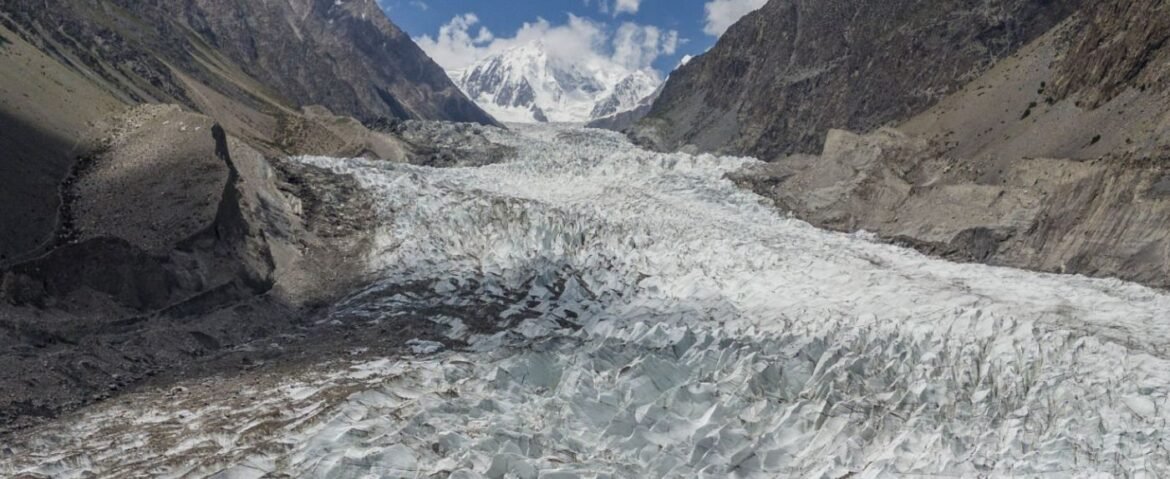An important step toward enhancing water security and sustainable agriculture in Pakistan’s mountainous areas is the $250 million investment for glacier-fed rivers in the high-altitude zones.
These glacier-fed rivers are essential for electricity, drinking water, and irrigation, but they are becoming more and more endangered due to climate change and faster ice melt.
The investment aims to help high-altitude communities be better prepared for climate change by improving irrigation systems, creating plans for dealing with melting glaciers, and using eco-friendly water distribution methods. Read other news on newstodate.co.uk.
Communities gain from a safer, more dependable water supply, and farmers can use resilient agriculture techniques, reduce ice-melt risks, and sustain steady crop production with focused assistance.
This program demonstrates a sustained dedication to preserving Pakistan’s glacier-fed rivers and promoting climate-resilient growth in regions fed by mountains.
Overview of Pakistan’s Glacier-Fed Rivers
Pakistan’s glacier-fed rivers are essential to the nation’s agriculture, climate resiliency, and water security. These rivers come from high-altitude glaciers and bring water to mountain-fed areas for drinking, irrigation, and hydropower production.
As the effects of global warming worsen, ice is melting more quickly and shrinking, endangering residents, agriculture, and water flow stability. To improve resilience in these areas, the government has started a $250 million project with assistance from the Asian Development Bank (ADB).
Implementing ice-melt adaptation strategies and ensuring sustainable mountain-sourced irrigated farming are the goals of this investment in order to protect crop and water stability.
The Ice-to-Farm Program and Its Objectives
Strengthening Resilience in Agriculture
The Ice-to-Farm initiative aims to improve irrigation systems fed by glacier-fed rivers in Pakistan in order to increase agricultural production in high-altitude areas.
The program seeks to protect crops from ice-melt threats for crops and water by investing specifically in highland water management systems, guaranteeing a steady supply during periods of high melt.
This initiative’s localized resilience planning will help farmers implement environmentally friendly and sustainable weather-proof farming practices.
Techniques for Ice-Mass Adjustment
An essential component of the project is the use of ice-mass modification techniques. These tactics involve the development of high-altitude lake overflow hazard management systems, the implementation of ice shrinkage prevention measures, and the monitoring of the stability of the thinning ice.
Storm Floris Causes Travel Chaos Across the UK
The effort seeks to safeguard farming zones and populations downstream against abrupt water surges and interruptions brought on by climatic variability by evaluating ice-source water oversight and possible flood dangers.
A $250 million investment in mountain farming
Allocation and Scope of Funding
The $250 million investment in mountain agriculture will go toward several initiatives to strengthen Pakistan’s glacier-fed waterways.
With resilience finance programs, an environmentally friendly water distribution plan with ADB’s environmental support, Pakistan can carry out adaptation projects that include safe water planning, managing overflow from high-altitude lakes, and farming methods that can withstand climate and support farming safety in elevated terrains.
The Asian Development Bank’s Function
The Ice-to-Farm initiative’s effectiveness is largely dependent on the ADB environmental support program. For sustainable irrigation projects, the bank offers monitoring tools, funding oversight, and technical advice.
Pakistan may execute adaptation initiatives that incorporate safe water planning techniques, high-altitude lake overflow control, and climate-resilient farming practices with ADB environmental support.
This partnership guarantees that the program achieves its short- and long-term objectives for agriculture and water security.
Pakistan’s Response to the Impact of Global Warming
Pakistan’s glacier-fed rivers are especially susceptible to the consequences of global warming, which include altered precipitation patterns, rapid ice melting, and unpredictable river flow.
Through a combination of high-altitude lake management, ice-source water supervision, and mountain-sourced irrigated farming, the effort seeks to reduce these dangers.
Farmers gain from localized resilience planning, which increases crop protection in high-altitude areas, strengthens adaptive capacity, and guarantees that agricultural sustainability initiatives continue to be successful in the face of climatic variability.
Planning for Safe and Sustainable Water
Sustainable Water Provision
The creation of environmentally friendly water distribution systems is one of the main objectives. These glacier-fed irrigation systems minimize water loss while optimizing water efficiency.
To safeguard agricultural land and communities downstream, the initiative places a high priority on climate-resilient irrigation networks, safe water planning techniques, and highland water management systems.
Advantages for the Environment and Community
The initiative offers more than just agricultural advantages. Local communities can implement weatherproof farming practices and farming safeguards in high-elevation areas thanks to resilience finance programs.
Furthermore, preventing glacier shrinkage lowers the chance of glacial lake flooding and contributes to long-term environmental sustainability by maintaining a steady water supply.
Prospects for Pakistan’s Glacier-Fed Rivers
It is anticipated that Pakistan’s glacier-fed rivers will become more resilient to the risks of ice melting for crops and water thanks to the $250 million investment and continuous assistance from the ADB environmental support initiative.
The climate readiness of high-altitude areas will increase, offering a model for comparable initiatives in other mountain-fed areas.
For many years to come, sustainable agriculture, water security, and community resilience will be guaranteed by the integration of high-altitude lake overflow mitigation, safe water planning techniques, and irrigation farming derived from mountains.
Conclusion
The $250 million investment in Pakistan’s glacier-fed rivers is a significant step in protecting the nation’s high-altitude mountain crops and water supplies.
Pakistan can successfully combat ice-melt dangers, glacier shrinkage, and climate-related disruptions by integrating the Ice-to-Farm effort with ice-mass adjustment measures, highland water management systems, and localized resilience planning.
Through its environmental support program, the Asian Development Bank makes sure that money is used for safe water planning techniques, weatherproof agricultural practices, and sustainable irrigation projects.
In addition to protecting high-altitude communities and promoting long-term climate resilience, this integrated approach will improve Pakistan’s mountain-fed agriculture.
By protecting Pakistan’s glacier-fed rivers, the initiative serves as a model for other areas dealing with comparable issues brought on by the effects of global warming.
FAQs
1: What are glacier-fed rivers in Pakistan?
Glacier-fed rivers in Pakistan originate from high-altitude glaciers and supply water for irrigation, drinking, and hydropower.
2: What is the Ice-to-Farm initiative?
It is a $250M program designed to boost agriculture in high-altitude areas using glacier-fed river water and climate-resilient farming methods.
3: How does the ADB support Pakistan’s glacier-fed rivers?
The Asian Development Bank provides funding, technical guidance, and monitoring for sustainable irrigation and high-altitude water management projects.
4: What are ice-melt hazards for crops and water?
Ice-melt hazards include flooding, erratic river flow, and reduced water availability, which can damage crops and disrupt agriculture.
5: How does the initiative address climate change effects?
The program implements ice-mass adjustment strategies, resilience financing schemes, and eco-friendly water distribution to enhance agricultural and water security in high-altitude regions.


